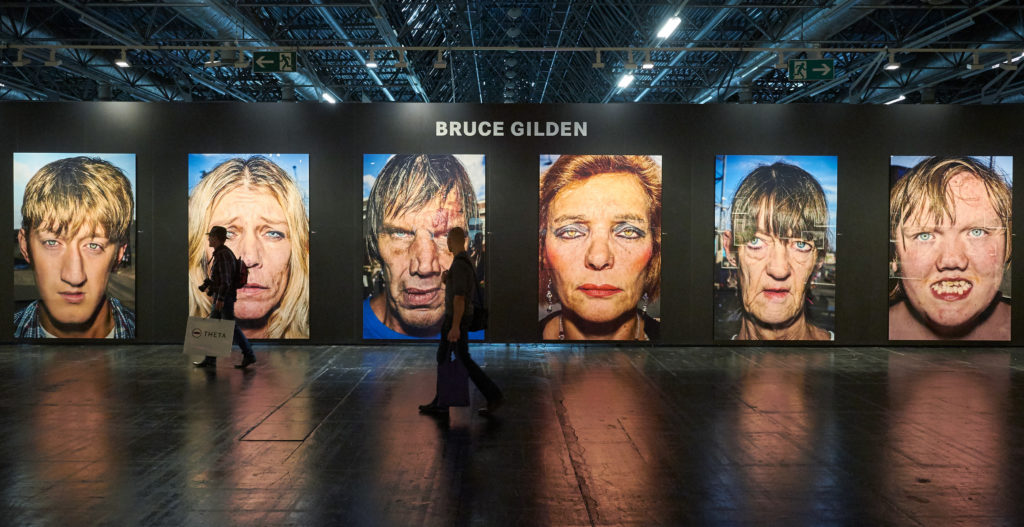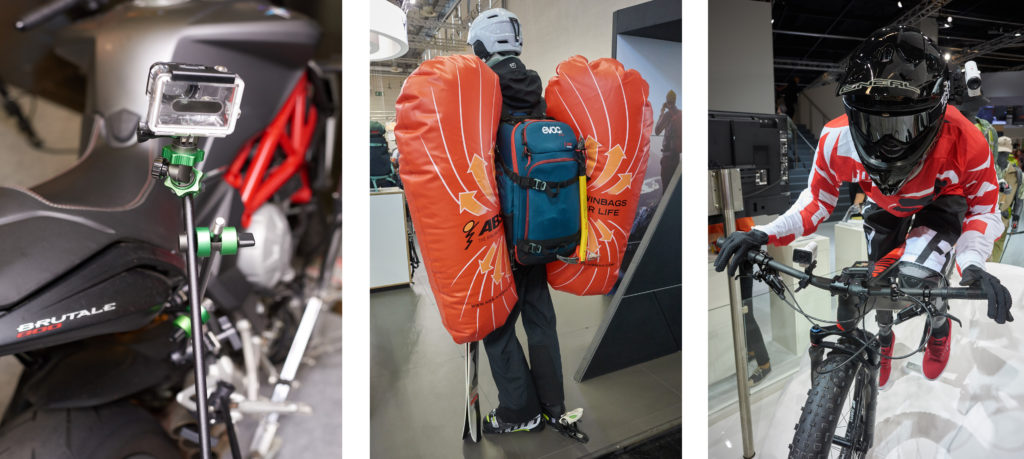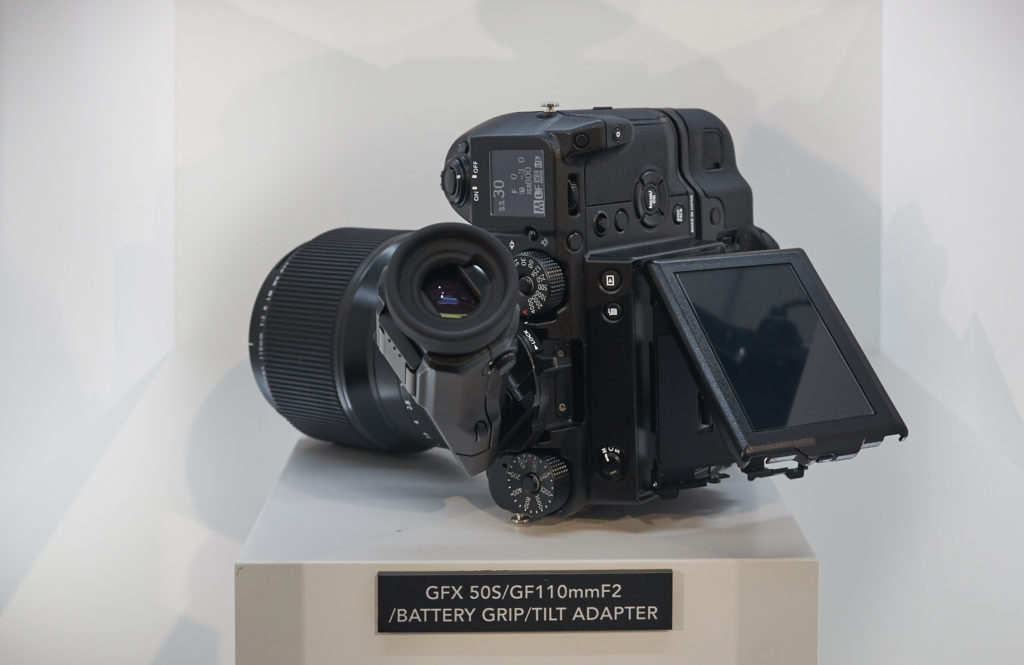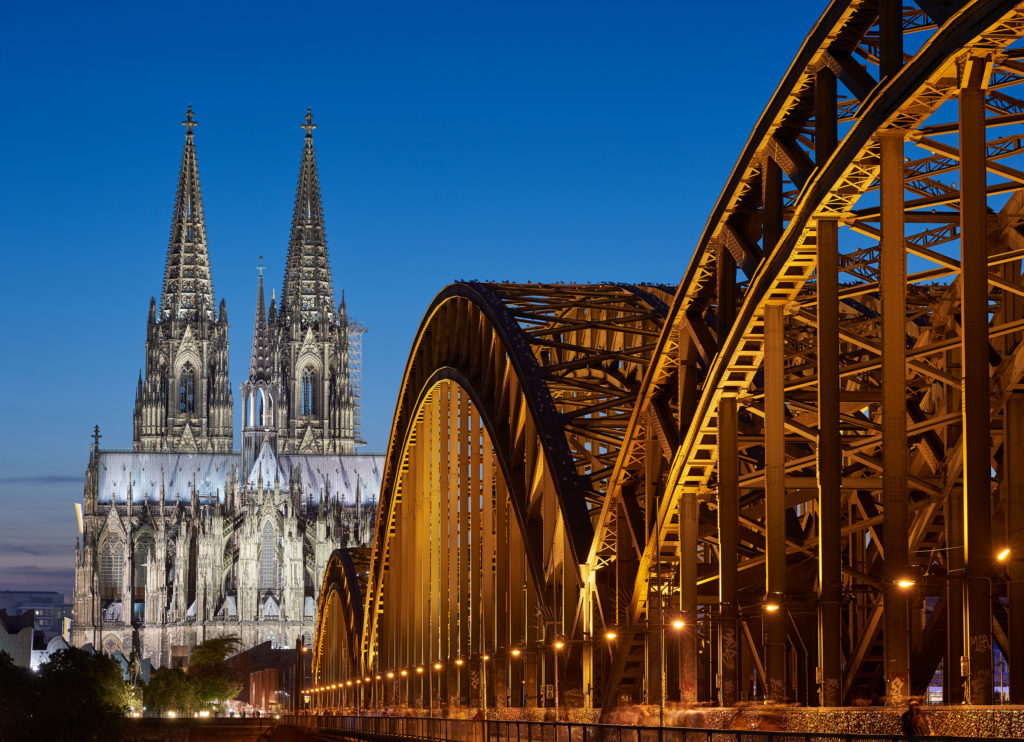
Masters of Photography at Photokina 2016
I am back from Photokina; what used to be the world’s largest trade fair for the imaging industry has turned into an event for the generation selfie: drone airport, video-blogs, action-camera arena, and yes, Mazda car exhibition. More gadgets than gear.
In any case, it is unlikely to discover stuff that has not been already discussed at the numerous rumor sites. Camera manufacturers have been launching new products all year, reports, tests and even videos are uploaded within hours of release and progress has become so incremental that there isn’t anything that shouts game-changer. For hands on experience with new equipment, it’s better to negotiate with a dealer or to sign up for a demonstration. What triggered me were not so much the new camera releases but rather the photographic exhibitions, printers and papers, and the future directions in photography at large.
I have to give it to Leica for organising the exhibition “Masters of Photography” occupying about 2000 m² of Hall 1 and including Bruce Gilden (Face), Ellen von Unworthy (Wild wild west), Per-Anders Peterson (African catwalk) and Ara Güler (Leica Hall of Fame Award), among others. This alone justified the admission fee. That camera manufacturers advertise and support the printed image makes perfect sense. For sharing on the social media, camera phones are sufficient and even for viewing on the best screens 20 MP is enough. What used to be commonplace about 15 years ago must now be promoted; the images is only complete when printed.
Leica’s booth, on the other hand, looked like any Leica store, augmented by an area that much reminded me about Rolls Royce exhibits at car shows; you don’t really feel welcome. But this marketing strategy seems to pay off. While basically all systems have passed the threshold of sufficiency for most, it makes sense to establish them as luxurious items (Leica M-P 240 Lenny Kravitz Edition, anybody?).
Talking about the Aston Martin, rather, in the world of photographic equipment, the title goes to the Hasselblad X1D. Beautiful nordic design and noble materials, touch screen and a well thought-out menu, with the main functions on dials and buttons. However, the camera cannot be triggered by a sync cable, and because the body has no shutter, the options for third party lenses on mount adapters will be limited. And there is only one central focus point, although focus and recompose is not precise enough for this pixel count. Focus peaking will come with the next firmware upgrade, so they say.
Nikon displayed their recently announced D5 and D500 cameras. The high-resolution, almost Retina like, touch screen and the joystick, combined with a large focusing field in the D500, almost covering the entire frame, are small but significant improvements. And you can combine the joystick with back-button focusing. This alone would persuade me to upgrade to a D820. EVF hype* aside, I cannot not imagine covering a sports event by looking into a screen for an entire day, it’s something else with a reflex finder. But like with all proven and reliable things, take a Toyota Avensis, they are seldom really sexy. I did not have to line up for long at the Nikon counters.
Canon presented a 120 MP EOS prototype that went relatively unnoticed, at least by the press and on the blogs. But this is a big thing in my oppinion. It isn’t clear if and when this will be available and nobody was able to explain what holds them back; the cost of the sensor, the speed of the processor, the limitations of their lens line, noise at high ISO, or reduced dynamic range. But oversampling is always a good idea, not for the sake of resolution alone, but for color separation. No surprise that the technology is there, just take the sensor of the Sony DSC RX 100 IV and scale it up to full frame, voila, 148 MP. And even if its per-pixel image quality was not as good (diffraction limits setting in very early), it would still make an awesome 22″ print with no digital artefacts and smooth tonal transition.
Talking about Sony, they stole the show, not only with their giant exhibition area but also with their G Master lens line and the α 99 II (42 MP, back illuminated sensor and translucent mirror). Not to forget their introduction of seven new cameras so far this year. And they had the best shows, including the Samurai Sword Show by Tetsuo Shimaguchi, the choreographer of the Kill Bill movies.
As all large companies (Nikon included), Sony are taking on the Go-Pro market. This makes sense from a corporate standpoint, but it’s not for me. Aiming at likes on YouTube or features on the RedBull and Go-Pro pages may seriously endanger your life.

Action !
Fuji(film) was strong with the recently updated X-T2 and X-Pro2 plus their medium-format Fuji GFX 50S; still behind a glass wall. Not as handsome as the Hassy, it is in a way similar, with a 43.8 x 32.9 mm sensor of 4/3 aspect ratio and 50+ megapixels. No mention whether this is the same sensor as in the X1D or a variant to Fuji specifications. In any case, there is a shortage on these sensors, which is clear from the repeated Hasselblad X1D delays (now until November) and the early discontinuation of their CFV-50c digital back that uses the same sensor. The entire camera industry now seems to depend on Sony sensors, while their production is affected by the Kumamoto earthquake earlier this year.
The GFX 50S is a smart move from a marketing standpoint, it does not compete with Fuji’s own X line, but seriously challenges Canikon’s full frame. What I could see in their showcase promises to be a flexible system with the good genes from the X line, a complete line of new lenses, and a focal-plane shutter (1/4000) allowing to shoot everything that can be attached, including the Otuses and the Nikon PC-Es that will cover this sensor. There is even an articulated viewfinder. And notice the autofocus joystick; very promising.

Not for the Hipsters but a real workhorse; Fuji’s GFX 50S
Not much can be written about papers and printers, as it is difficult to describe the haptic and look of the finished prints. For inkjet printing my favourite papers are Tecco’s (slogan: post it for now, print it forever) FineArt Rag (295 g/m²) and Baryta Fibre Silk (310 g/m²), and Canson’s Rag and Baryta Photographique (310 g). Epson has renamed its products, what I used in the past is now called “Ultra Premium Photo Paper Glossy” quite a mouthful of buzzwords. Not much progress can be reported on the printer technology itself, except for Canon’s 12-color Lucia ink system, which would merit to be compared side-by-side with Epson’s UltraChrome K3.
Ultra-high gloss still requires a printing service using LightJet technology on Fuji Crystal Archive or Kodak Professional Endura Metallic for the ultimate Cibachrome look and archival permanence. One of the leading print services, Whitewall, produce impressive, ultra large prints (up to about 2 m). Their services include direct prints on aluminium, prints mounted under acrylic glass, canvas and textile surface prints, as well as LightJet prints.
A glossy alternative are ChromaLuxe photo panels; images are infused on aluminium through a dye sublimation process. For my taste this works well for abstracts and architecture, less for B&W, while color landscapes bear the risk to turn into kitsch. I have to admit though, that 20 years ago I was all excited about the rich colors of Fujichrome Velvia printed on Cibachrome. Since this effect can be created easily by turning the saturation slider to +30 I am reacting a bit allergic.
Except for the Fuji Instax, which comes in possibly hundred different colors, and the Leica Sofort (??!), Film is not an issue. It’s dead. Interesting enough, even the guys at the Linhof booth did not have a clear opinion on the future of film. They should urgently establish a centralised distribution, development and scanning centre to support their clients with 4×5 sheet film. I would even propose a name for it: EasyFilm.
As a consequence, Jobo seems to do all right, selling new types of home development kits; the way ahead when even the last lab will have closed down. But it is absurd, I have always relied on labs, and now that film has become a niche I start fiddling with chemicals?
Zeiss and Sigma have extended their lens line ups (Milvus and Art, respectively) and provided ample opportunity to shoot them on your own camera. The Zeiss lenses are works of art, although manual focus remains a bit of an anachronism these days. I was particularly impressed by the Sigma 150-600 F5-6.3 Sports; handheld at 600 m, f/6.3 and 1/150 sec. yielded a reasonably sharp image even at the edge. As a more general remark, Sigma’s autofocus system is completely silent (although reported to be unreliable) and the built quality gives the established manufacturer’s products a run for the money.
The big news at Olympus was their OM-D E-M1 Mk II, they just made a great product even better (in-body stabilisation, pixel-shift mode, touch screen, automatic blending for astro photography, in-camera focus stacking in high-speed continuous burst mode etc., etc.). I know only happy owners of the predecessor models. Coming from large format, Micro 4/3 was not for me, although my attitude has changes somewhat recently. For all subjects that don’t require (or merit) a big print, use a Micro 4/3 or APS-C sized model paired with a medium range, and a telephoto zoom lens. Add to this the GFX 50S with 3 primes and you are loaded for bear.
Summing up, I don’t feel the need to upgrade from the two-year-old D810, which is in a way a good sign and shows that the product live cycles get longer. This also means that it starts to make sense to look at the used camera market.
One rant at the end: the worst experience of Photokina was the catering. Overcrowded food-stands serving nothing but “Bockwurst”. At 18:00 I headed across the Rhine for a decent meal. On my way back I stopped at the Hohenzollern bridge where hundreds had set up their tripods. Good that I had mine too. SR.

Cologne Cathedral from the Hohenzollern bridge. The 225067th shot since last Monday alone. Notice the flash-light photographers.
* Take the Leica SL: The (full metal) body is a bit lighter and smaller than a pro DSLR but the lenses look like RPG launchers. I don’t get the point.